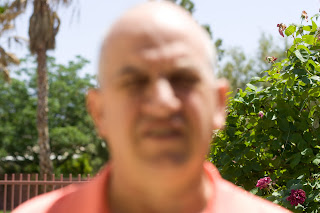In 2007 Lou and I made the trip to Great Sand Dunes National Park. It has the highest dunes in the United States with the highest dune measuring 750 feet. It attracts vacationers from all over the world totaling about 300,000 people a year. The fascination with the park is the sand, but there is so much more than that there. Our visit included snow, 10 inches of it.
I decided to write about The Great Sand Dunes because two of my photographs were selected for display this summer. This post is mostly photographs with snippets about the stay.
On the first full day there we decided to search the area around the Dunes. We planned to explore the Dunes later on our visit. THe snow killed that plan. A collection of photographs from that day:
(By the way click on the photographs to see them larger, and back to get to the page.) Hey don't down load these it is a violation of Copyright. Another way of saying it: it is stealing.
IS0 100, F9, Shutter Speed 1/640 There are three hikers in this photograph. They help give scale to the dunes.

ISO 100, F8, Shutter Speed 1/400 Notice the depth of the dunes.
ISO 100, F8, Shutter Speed 1/250
ISO 100, F8, Shutter Speed 1/250 This is one of my favorites. This river only runs part of the year.
ISO 100, F8, Shutter Speed 1/1250
So that night it snowed. And snowed. And snowed.
And it was still snowing the next morning. We were staying in a cabin just outside the Park. We had a space heater, but the electricty kept flickering. So, we packed up. No we didn't leave. There was a motel right next door. We checked in. If we were going to be without heat I wanted company. I kept thinking snow covered dunes, and that it would be unusal. Later I was to find out that the park only had a few photographs of the Dunes with snow on them. The sand retains heat and the snow melts quickly. So day three was spent waiting for snow plows, swimming (indoor pool) and a quick trip to town. Well I did work in a couple of pictures.
If you think you see a bunch of dots in the picture, you would be right. It's snow. Oh there are birds too.
Roads plowed about 4 pm. Even though its still snowing, its time to get out in it.
ISO 100, F8, Shutter Speed 1/250
Did I mention it was still snowing?
ISO 100, F8, Shutter Speed 1/640 The storm retreated and then the snow stopped and the dunes were covered.
ISO 100, F8, Shutter Speed 1/640
ISO 100, F8, Shutter Speed 1/640
The next day at sunrise.
ISO 100, F8, Shutter Speed1/640
ISO 100, F8, Shutter Speed 1/1250
ISO 100, F9, Shutter Speed 1/640
ISO 100, F32, Shutter Speed 1/40 The reason for the F-stop was to make the whole photograph sharp.
It was cold.
ISO 100, F5.6, Shutter Speed 1/250
ISO 100, F5.6, Shutter Speed 1/250
ISO 100, F5.6, Shutter Speed 1/250
ISO 100, F9, Shutter Speed 1/500ISO 100, F9, Shutter Speed 1/500
ISO 100, F9, Shutter Speed 1/500
ISO 100, F8, Shutter Speed 1/1250
ISO 100, F8, Shutter Speed 1/1250
ISO 100, F5.6, Shutter Speed 1/2000 This last photograph gives the best scale, and is taken as we left. The hikers are dwarfed by the dunes. There had been 10 inches of snow, and it is mostly gone 24 hours after it stopped. My submission for consideration included 23 photographs found here in a slide show: http://www.grangersimagesandaction.com/Great%20Sand%20Dunes%20National%20Park/index.html
From the slideshow they approved 9. These are the two I chose and are the ones on display:
Next time let's do flowers, and then sports.

































